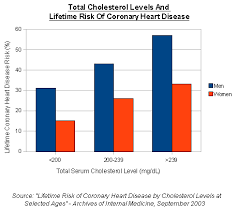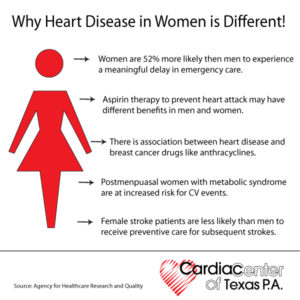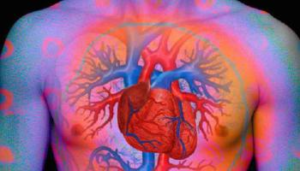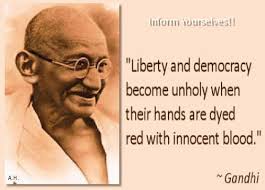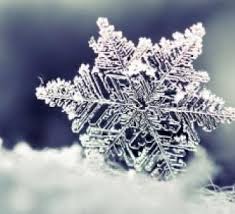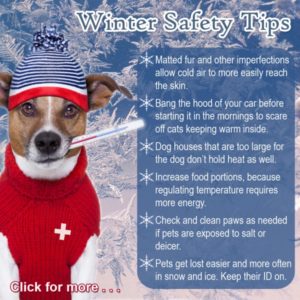





In today’s quote Hamlet’s point was that humans are a remarkable species — though Hamlet himself has lost all appreciation for mankind. Humans have created phenomenal architectural structures ranging from pyramids to skyscrapers. We’ve explored the depths of the ocean and the surface of the moon. We’ve created works of art that can affect emotions and provoke thoughtful conversations.
Perhaps what makes us even more remarkable is that we have this seemingly infinite capacity to achieve great things, and yet our history is filled with violence toward one another. How can we dedicate countless hours to matters of art, science, and other sophisticated pursuits and still commit acts of murder or wage globe-spanning wars?
We have a tendency to think of ourselves as existing apart from other species. Humans have the ability to reason and pass down knowledge to future generations. This ability makes it seem like we base our actions mainly upon rationality. But how do we reconcile that with the act of eliminating other members of our own species?
It’s a complex problem. Part of the answer may be that we’re not as separate from other animals as we imagine. It’s dangerous to ascribe traits to other species — we run the risk of anthropomorphizing animals and assuming the reasons they behave a certain way are the same as our own. Anthropomorphizing is attribution of human form or other characteristics to anything other than a human being. But in general, it seems that animal behavior is the product of instinct, emotion and reason. Some animals demonstrate a greater aptitude for reasoning than others. Humans are at the top of that list.
But that doesn’t mean all our decisions are based upon cold, calculating rationality. Neuroscientist Antonio Damasio’s research indicates that emotions play an important role in decision making. He conducted experiments with people who had suffered brain damage that affected the part of the brain that allows us to experience emotions. In his studies, Damasio found that the patients had trouble making choices. They could identify solutions to a problem but couldn’t decide upon a specific course of action [source: Wrangham and Peterson]. Why is that important? It indicates that while we’re not slaves to our emotions, they play an important part in how we behave.
One of the reasona we kill is because our ancestors killed. By killing, our ancestors removed rivals and ensured the survival of their offspring. In other words, we’re violent because all the peaceful ancestors to humans were killed off by the violent ones. We’ve inherited our nature from our predecessors. We call this evolutionary biology.
This view is by no means universal. Scientists from different disciplines have criticized evolutionary biology, saying that it oversimplifies human behavior and serves as a genetic excuse for bad behavior. While there is scientific consensus that the human brain is the product of evolution, there’s a gap between those who think our brains are in Stone Age mode and those who say the brain is much more flexible than evolutionary biologists admit. What do you think?
One counterargument to evolutionary biology states that our minds are adaptive and evolve far faster than evolutionary biology. Stating there is no universal human nature — the environment and our adaptation to it means that each culture has its own unique nature [source: Begley]. Though another thing to take into account is history does repeat itself. Could we change it? Yes but the main question is do our people ALL around the world want that, and obviously no.
There is another debate on why we kill and that is on a superficial level we kill because it comes down to nature versus nurture. The nature side suggests that we are inherently a violent species and it should come as no surprise that we sometimes kill one another. The nurture side says that we are an adaptive species and that our environments — including everything from family structure to political influences — shape our behaviors. The truth is probably that we’re a product of both. Ignoring one set of influences while concentrating on the other is missing the story.
If we’re the product of both inherited traits and environmental influences, what would give us the reason to kill? Many answers boil down to survival. In some cases, it’s as simple as access to resources. Whether it’s a conflict between two people or multiple nations, the reason to kill may be linked to the fact that one party wants what the other party possesses. That might motivate people to kill in order to take or protect those resources. The intellectual and emotional need for those resources is often greater than the reluctance to kill.
So why else would a human kill? A person with antisocial personality disorder feels no empathy toward others. Not all violent conflicts are over resources, though. This is where people we call psychopaths and sociopaths come into play. Example criminals like Charles Manson may kill — or inspire others to kill — based on fundamentally flawed reasoning. They feel very little emotion at all and may seek out dangerous or thrilling situations to get an emotional response. They tend to be deceitful and feel no shame or guilt for misleading others. While they may recognize right from wrong, they may not care about the distinction.
According to a hypothesis posed by Ervin Staub, genocide is a result of a combination of environmental hardships and psychological coping. Staub suggests that when times are hard, people look for an excuse or scapegoat. That can include identifying a subsection of the population as being responsible for the hardship the community experiences. Wiping out that population is a way to cope with the hardship. It’s a means to solve a problem, even though the solution and problem aren’t necessarily connected in reality. Is this what is going on now in NY with the people rioting?; not protesting since this is done peacefully. It is not blocking traffic, burning down businesses, hurting people to killing people which all have happen regarding incidents that involved policeman in taking an action to someone who did something illegal by NYS law but the individual retaliating rather than being cooperative and investigations took place but because a certain group didn’t like the results it resorted to violence. The judicial system they did not follow. Have criminals been set free by court and no violence took place? Many times. So you decide is this the reason why we are violent to killing people?
What about the rest of us? What could drive us to kill? Since our decisions are based upon both emotions and reason, we can sometimes favor one over the other. In emotionally charged situations, we may allow ourselves to act impulsively, ignoring rationality. These so-called crimes of passion can happen between people with strong emotional bonds. According to the U.S. Bureau of Justice Statistics, 30 percent of all female murder victims were killed by their spouses. Another 18.3 percent were killed by ex-spouses. Only 8.7 percent of all female victims were killed by a stranger [source: Bureau of Justice Statistics].
This is scary and a very complicated discussion. Humans kill because we’re not dispassionate, robotic beings. We have wants and needs and possess the ability to pursue them. We may never know the full explanation of why we behave the way we do, but as we learn more we may find ways to improve ourselves and make murder a thing of the past. Yet that goal is very, very far away in reach.
Sources
- “Crime in the United States.” U.S. Department of Justice. Federal Bureau of Investigation. (Sept. 23, 2010) http://www.fbi.gov/ucr/cius2009/data/table_12.html
- Jonathan Strickland from the blog In How Things Work.
- “Homicide Trends in the U.S.” Bureau of Justice Statistics. (Sept. 23, 2010) http://bjs.ojp.usdoj.gov/content/homicide/gender.cfm#vorelgender
- Baumeister, Roy F. “Evil: Inside Human Violence and Cruelty.” Henry Holt and Company. New York. 1997.
- Begley, Sharon. “Why Do We Rape, Kill and Sleep Around?” Newsweek. June 20, 2009. (Sept. 22, 2010) http://www.newsweek.com/2009/06/19/why-do-we-rape-kill-and-sleep-around.html
- Hill, Gerald and Hill, Kathleen. “insanity.” The People’s Law Dictionary. Law.com. (Sept. 23, 2010) http://dictionary.law.com/Default.aspx?selected=979
- Koenigs, Michael, et al. “Damage to the prefrontal cortex increases utilitarian moral judgments.” Nature. April 2007, 446, pp. 908 – 911 Kelly, Dave. “Antisocial Personality Disorder.” PTypes Personality Types. 2010. (Sept. 23, 2010) http://www.ptypes.com/antisocialpd.html
- Lykken, David T. “The Antisocial Personalities.” Lawrence Erlbaum Associates. Hillsdale, N.J. 1995.
- Mattiuzzi, Paul G. “Why do people kill?” Everyday Psychology. July 30, 2008. (Sept. 21, 2010) http://everydaypsychology.com/2008/07/why-do-people-kill-typology-of-violent.html
- Polk, Kenneth “When Men Kill: Scenarios of Masculine Violence.” Cambridge University Press. Cambridge, U.K. 1994.
- Staub, Ervin. “The Roots of Evil: The Origins of Genocide and Other Group Violence.” Cambridge University Press. Cambridge, U.K. 1989.
- Wrangham, Richard and Peterson, Dale. “Demonic Males: apes and the origins of human violence.” Mariner Books. 1997.
- Wrangham, Richard. “Why We Kill.” bigthink.com. April 2, 2010. (Sept. 22, 2010) http://bigthink.com/ideas/19361

